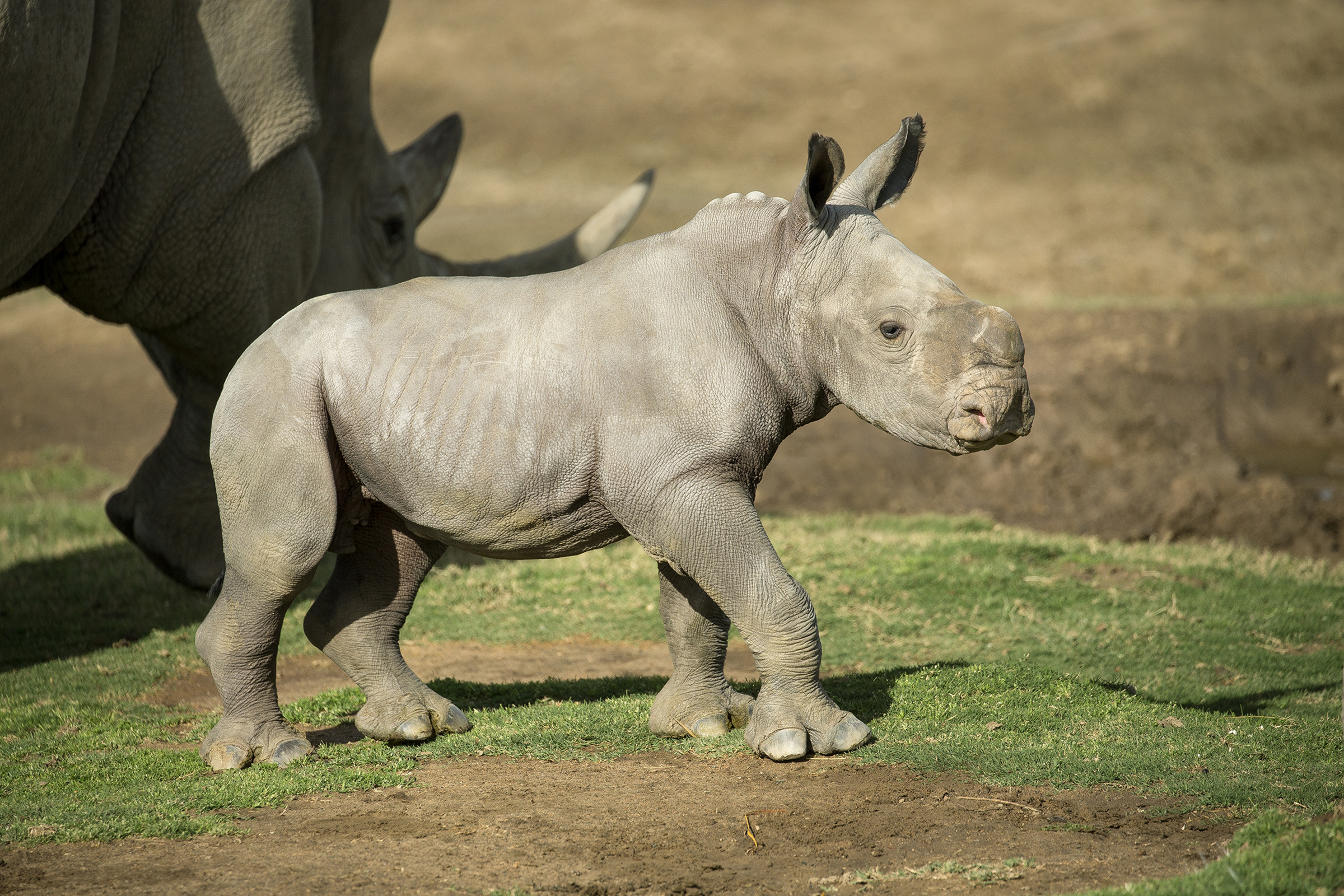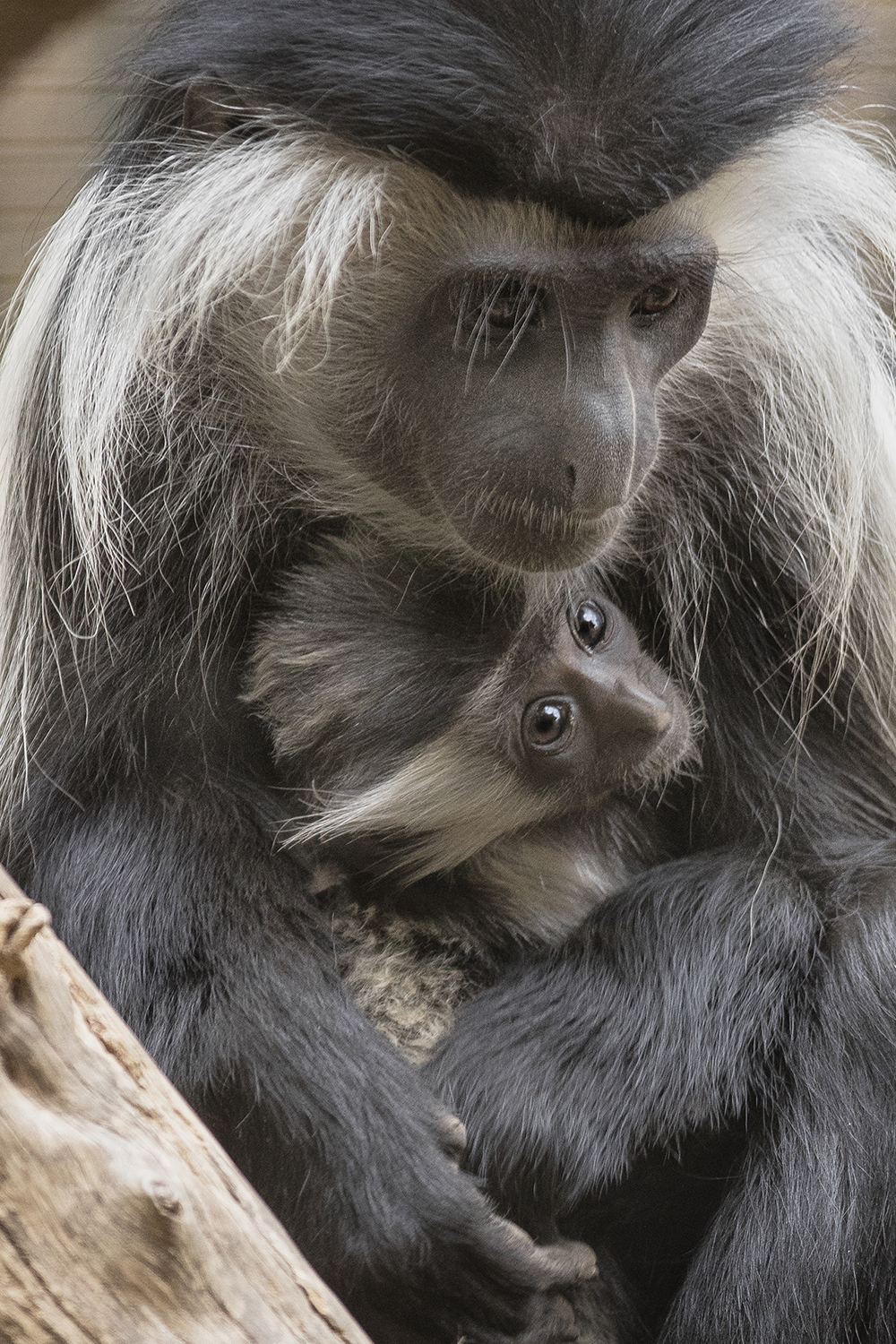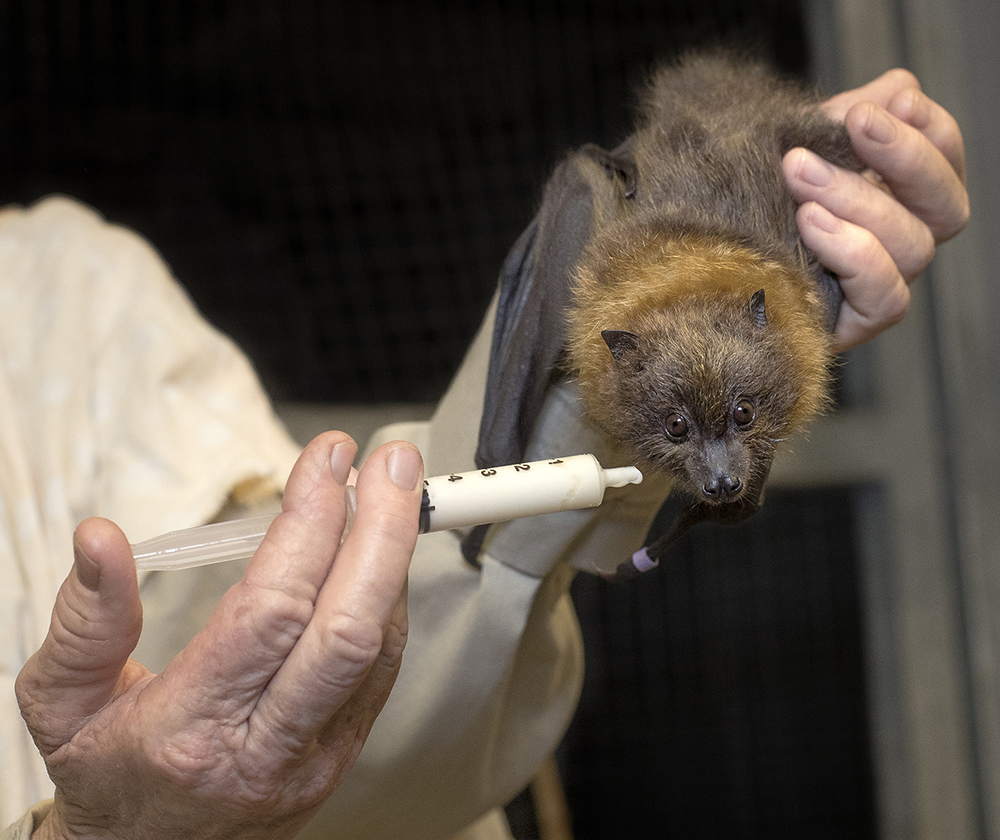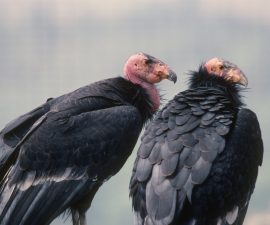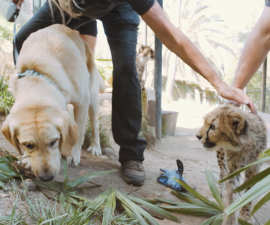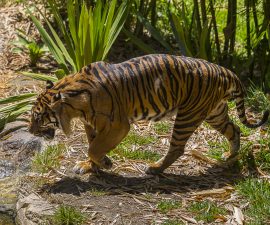Spring at the San Diego Zoo and Safari Park means the stork is working overtime as babies arrive—lots of them! From precious piglets to tiny turtles to cute calves, there are plenty of reasons to say “aww” as you stroll the grounds.
BY Eston Ellis and Peggy Scott
Photography by Ken Bohn
Jethro and Mary-Kate Plus One
On March 10, 2018, in the Zoo’s Lost Forest, Sulawesi babirusa Mary-Kate gave birth to a 1.5-pound daughter, named Cahaya (which means “radiant” in the Malay language), and Jethro became a proud papa. Keepers describe the new piglet as “feisty and very playful.” Cahaya, her mom Mary-Kate, and her brother Amir are out on exhibit every day. Across the pathway, in a separate exhibit area, guests can also see Jethro, along with the Zoo’s other babirusa mom, Fig, and her three offspring that were born in 2016.
Hello, Colobus
In a multigenerational Angolan colobus monkey troop, when one female has a baby, the whole troop has a baby. On January 25, 2018, experienced five-time mother Lia gave birth to a female, named Chiku. The infant’s arrival triggered alloparenting, a behavior in which every member of the group is attentive to and protective of the new youngster, and they take turns holding and looking after it. Chiku’s name means “chatterbox” in Swahili, and the name was especially appropriate, explained keeper Rachel Bronstein. “From day one, she would scream bloody murder if anything happened around her.” As she’s getting older, she’s also starting to climb more, explore on her own while Lia watches, and show her independence. With Chiku’s birth, the San Diego Zoo now has the largest Angolan colobus group outside of Africa, with 13 members—7 males and 6 females.
Over the Moon
There’s always a lot going on in the Zoo’s Lost Forest exhibit that is home to Schmidt’s red-tailed monkeys, Allen’s swamp monkeys, river otters, and red river hogs, all living together. But on the morning of January 30, 2018, the day of a rare lunar eclipse, something happened there that hadn’t occurred at the Zoo in 10 years. “I was coming into the exhibit, doing my normal routine, when I turned around and I saw that one of our females, BB, had a little ‘mini me,’” said keeper Jackie Jella. BB, a first-time mother, had given birth to the first Schmidt’s red-tailed monkey born at the Zoo since 2006. The baby was named Kupatwa, which means “eclipse” in Swahili. Over the past few months, Kupatwa has become more adventurous and curious. “His mom is now giving him a longer leash, so to speak, to explore more on his own,” Jackie said.
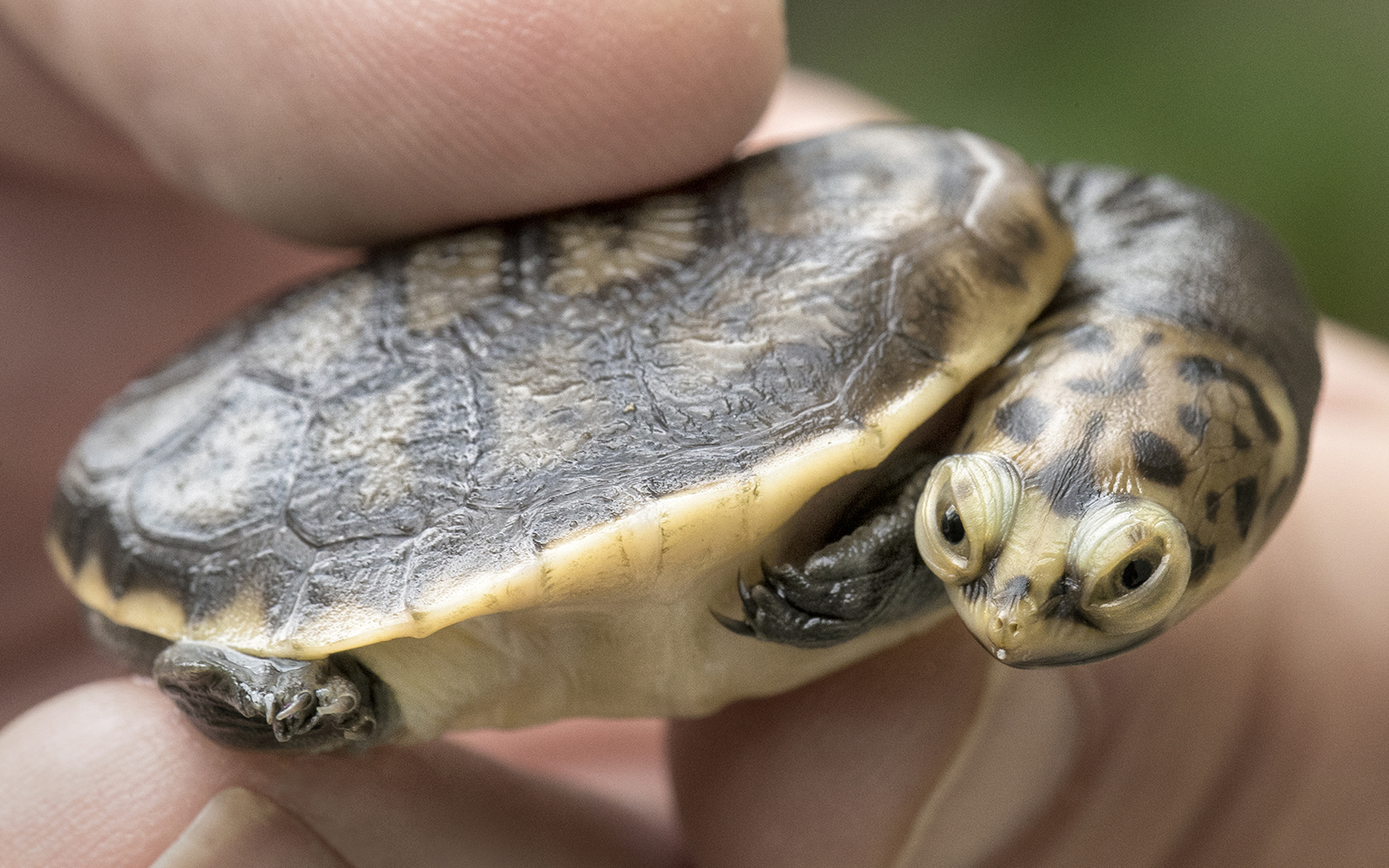
The lone hatchling from a group of 15 eggs discovered in a Reptile Mesa exhibit, this tiny Parker’s snake-necked turtle was a welcome surprise.
Shell of a Surprise
The morning of December 24, 2017, keepers at Reptile Mesa discovered a clutch of 15 tiny eggs—each about an inch long—laid on the sandy beach next to the water in the gharial exhibit. A variety of turtle species make their home in the pond with the gharials, and the keepers, based on the eggs’ small size, knew they belonged to one of the turtle species. But no one saw the turtle lay these, so they weren’t sure what species it was. Keepers gathered up the mystery eggs and brought them to the Reptile House. There, they were examined, marked, placed in a tray of vermiculite, and incubated at 82 degrees Fahrenheit. Keepers waited to see what—if anything—was going to hatch.
On April 3, 2018, one of the eggs finally hatched—and to the keepers’ delight, a tiny Oreo-cookie-sized Parker’s snake-necked turtle emerged. Mystery solved! Despite its small size, the little one had the species’ distinctive long neck. These turtles don’t pull their heads in, they tuck them sideways under the edge of the shell. They get their name from the neck’s resemblance to a snake. Unfortunately, the rest of the eggs in the surprise clutch did not hatch, so this tiny turtle hatchling was truly one of a kind.
Colorful Cubs
At San Diego Zoo Global’s off-site Cheetah Breeding Center, a trio of cubs was born on January 6, 2018, and they became visitor favorites when they came to the Safari Park’s Ione and Paul Harter Animal Care Center. Social media then made the cute little fuzz balls world famous. Identified at first by a dab of nontoxic color on their fur, the cubs now have names. “Purple” is a female, and her name, Tadala, means “we have been blessed.”
Her sister, “yellow,” is the lightest-colored cub and is now Lesedi, which, appropriately, translates to “light.” And “blue,” the only male cub, is called Jabula, which means “rejoice.” And everyone is doing exactly that over the cubs’ development. The sisters have returned to the Cheetah Breeding Center, while Jabula has headed south to the San Diego Zoo, where he will team up with another charismatic cat—Roketi the cheetah.
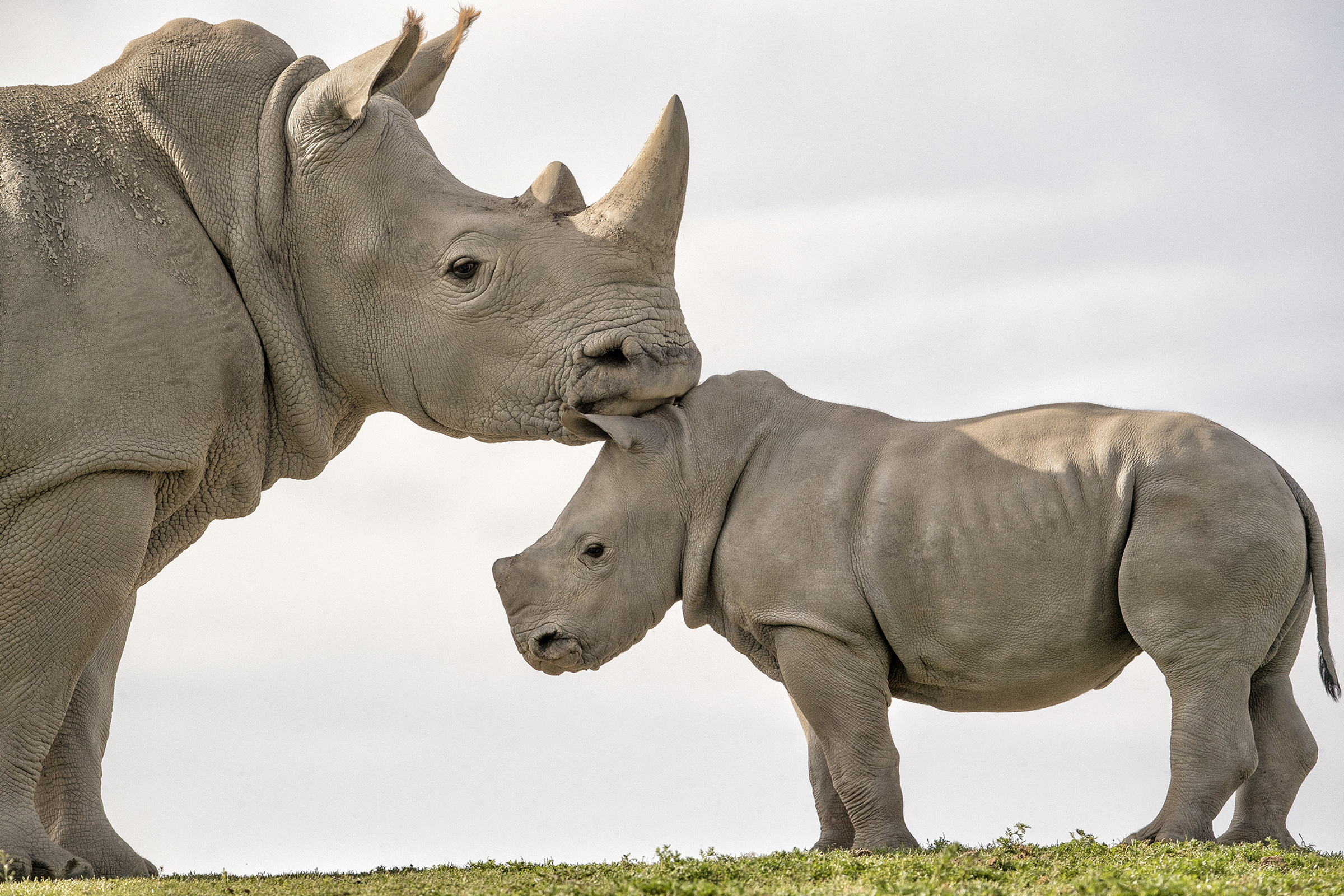
Justin, the Safari Park’s newest rhino arrival, is getting a “crash” course on life in the Park’s East African Plains from his mom, Kacy.
“Justin” Time
February 7, 2018, brought the pitter-patter of not-so-little feet to the Safari Park’s East African Plains—in the form of a 125-pound southern white rhino calf. Precocious and playful, the calf, named Justin, wasted no time showing off his personality, and his ability to try the patience of his mom, Kacy. She’s keeping tabs on her calf, but he’s giving her a run for her money. She’s enjoying having the upper “foot” now—but as an adult, Justin could weigh up to 5,000 pounds! You can see him and his rhino family from the Africa Tram.
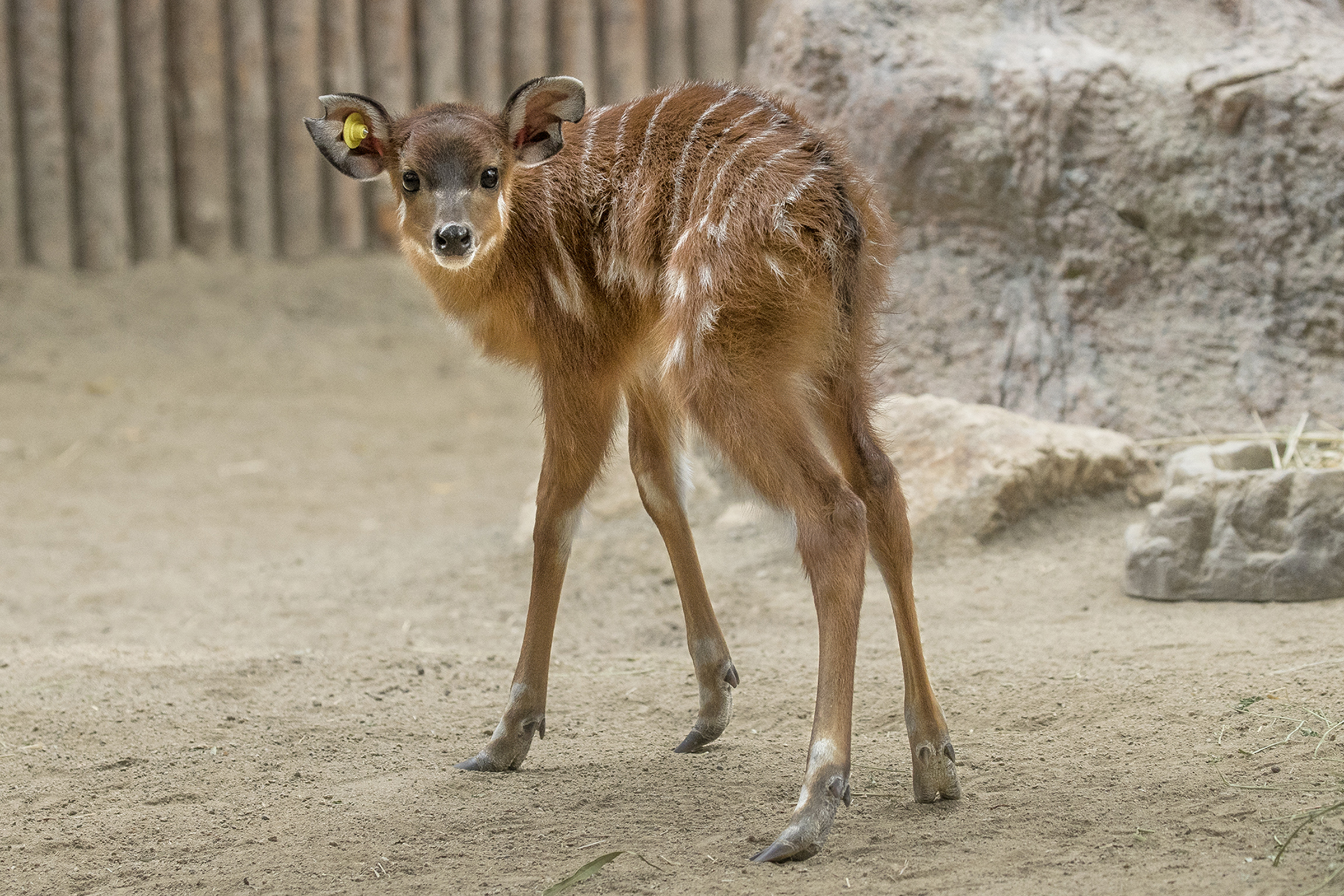
The Park’s Animal Care Center nursed Peeps, an East African sitatunga calf, back to health so he could eventually rejoin his herd.
Precious Peeps
It was no joke on April 1, 2018, when an East African sitatunga calf found himself in the Animal Care Center needing help. Born in one of the Park’s field exhibits, the spindly legged, spotted cutie was not nursing regularly, so keepers made the decision to take him to the nursery, where he would get lots of attention. Named Peeps in honor of his birth on Easter Sunday, the antelope calf eagerly accepted his bottle feedings, which he enjoyed right to the end of his wagging tail. Peeps will join his “peeps”—other hand-raised antelope calves—in the graduation pen at the ACC until he is weaned, and then he will rejoin his herd.
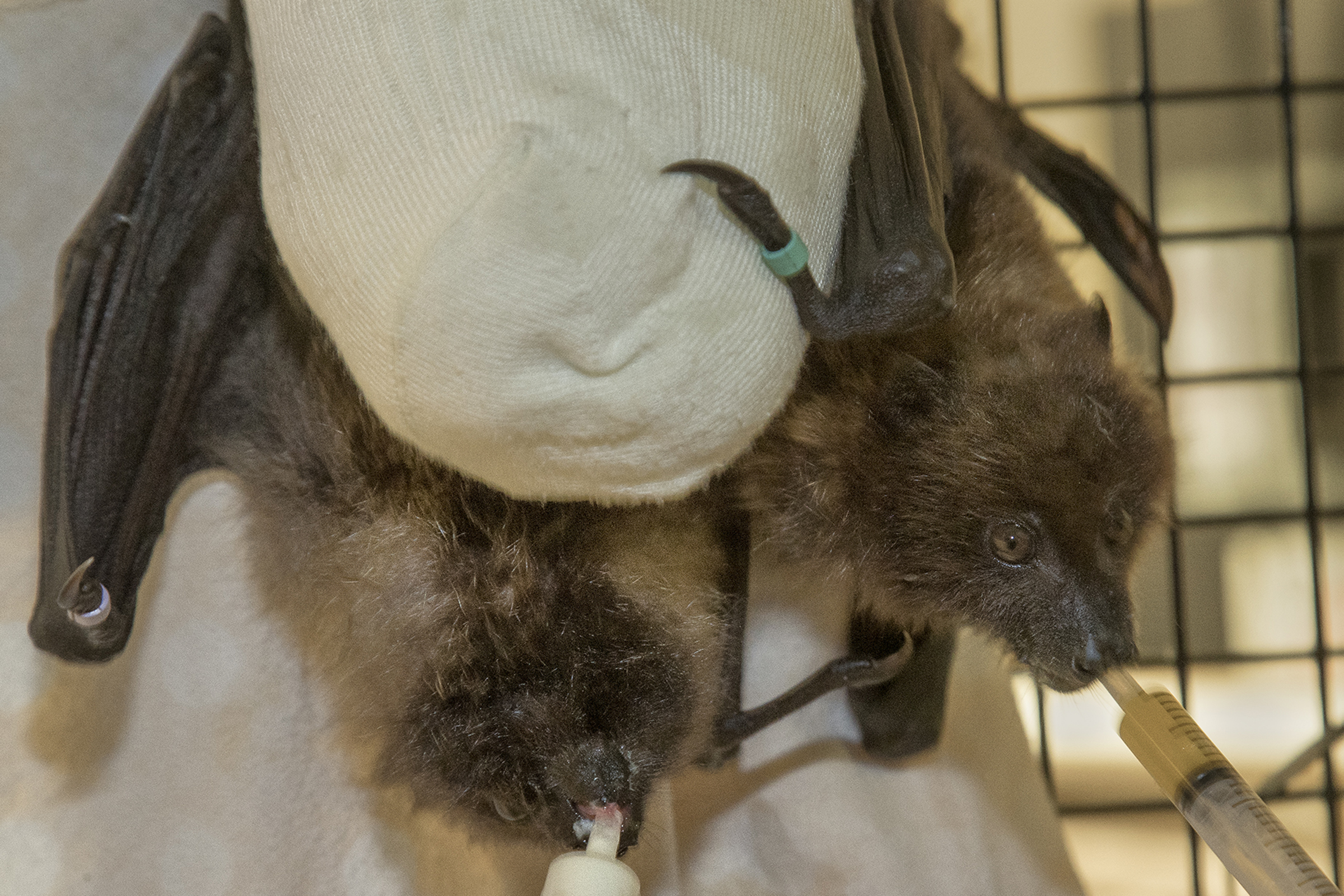
Rodrigues fruit bat pups McClure and Chiquita are receiving good nutrition and plenty of TLC at the Park’s Bat House.
Going Batty
Sometimes, two is one baby too many. Such was the case with McClure, a Rodrigues fruit bat pup, born on February 7, 2018, at the Safari Park. One bat in a set of twins, McClure’s future was in question. Twin births can result in one pup being rejected by the mother bat, which is unable to attend to the needs of two helpless offspring. “Sometimes, a twin bat birth can mean you lose all three, the pups and the mother,” explained senior keeper Kimberly Millspaugh. “While his twin was normal sized, McClure weighed little more than an ounce. He went right into the incubator.”
Three weeks later, a female pup was delivered via C-section to a different bat mother, at the Park hospital. This was the second time a C-section bat birth occurred at the Safari Park. Once the mother recovered from her surgery, she returned to the colony in the Bat House, while the pup, named Chiquita, continued to be cared for by the keepers. Chiquita has been growing and eating like a champ, according to Kimberly, receiving formula 6 times a day (down from the original 10 times). She also gets pureed peach, which she loves, and pureed carrots—which she can take or leave. “We make sure they get good nutrition,” Kimberly said.
These two bat pups, McClure and Chiquita, started out living in adjacent enclosures at the Bat House, which allowed them to see and smell each other. They were introduced, and are now sharing an enclosure. “He’s very interested in her, and it’s important that they get that socialization, “Kimberly said. “A bat pup’s need for affection and attention is on par with that of a baby primate. Once they’re big enough, they’ll join their colony.”
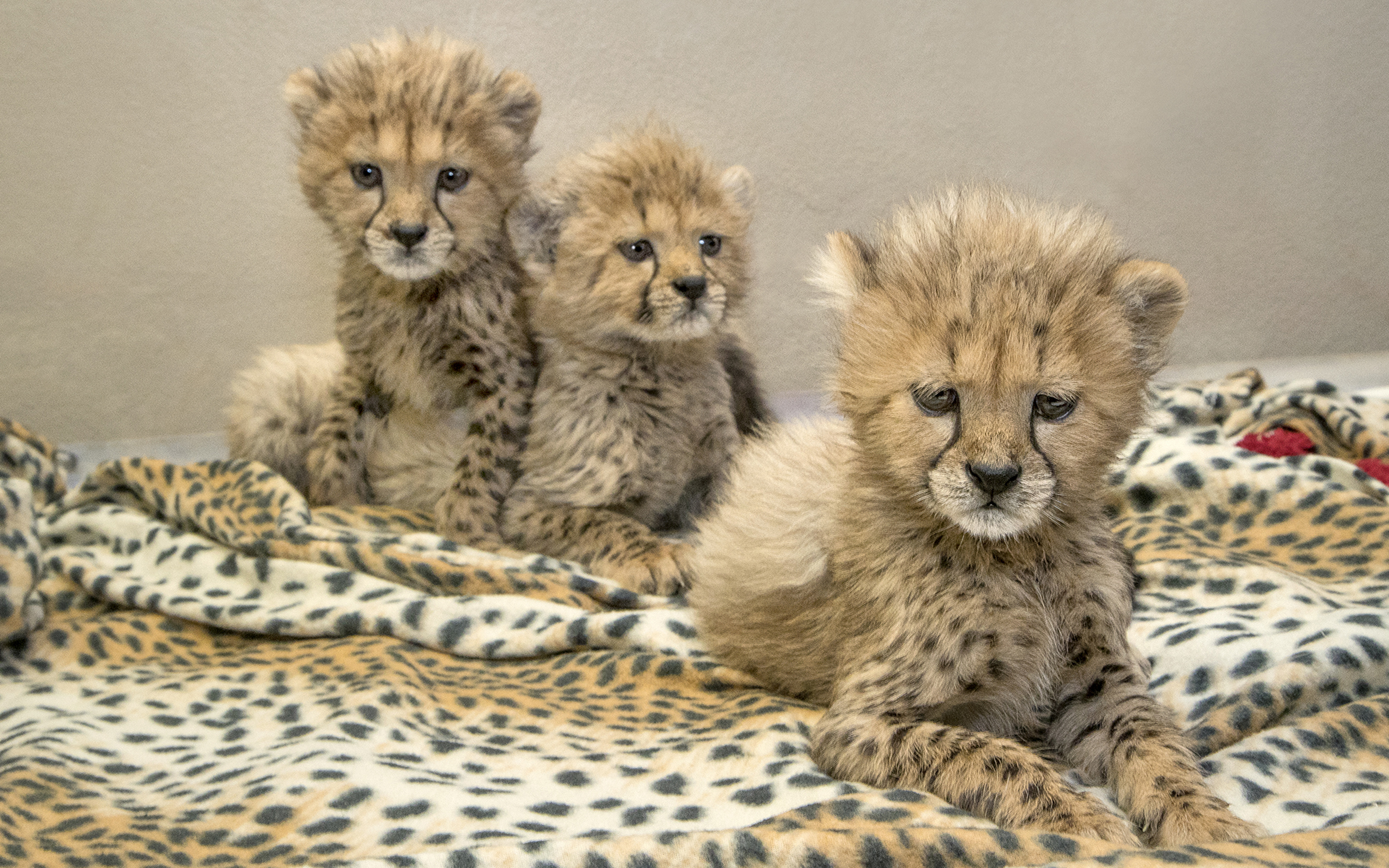
Cheetah cubs Lesedi, Jabula, and Tadala have graduated from the Animal Care Center and have bright futures awaiting them.
Got baby fever yet?
Head to the Zoo or Safari Park, where there are bundles of all shapes, sizes, and species of joy just waiting to be oohed and aww-ed over. But don’t wait too long—all kids grow up fast!

